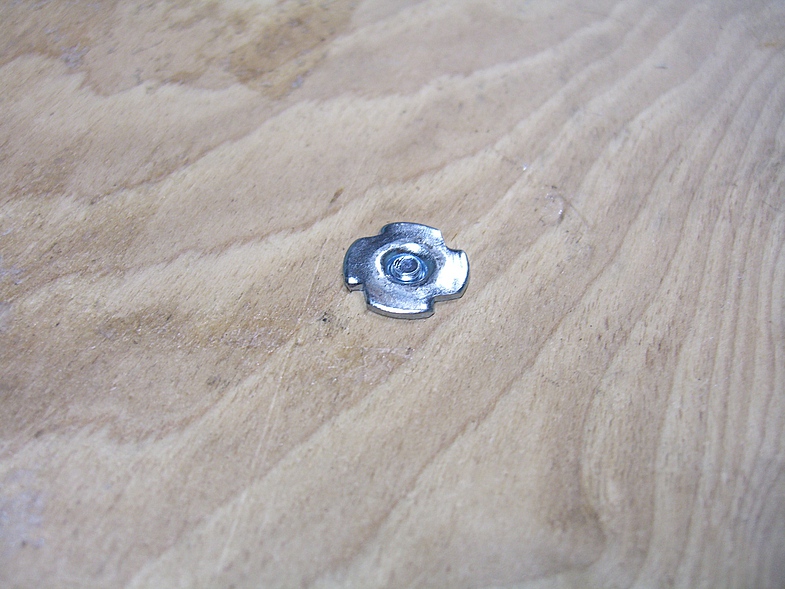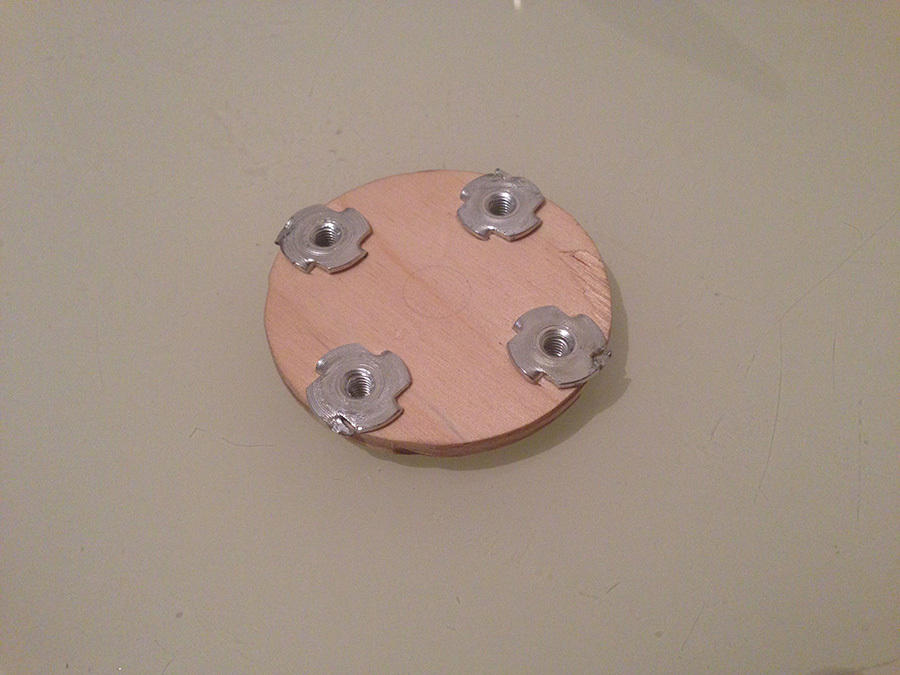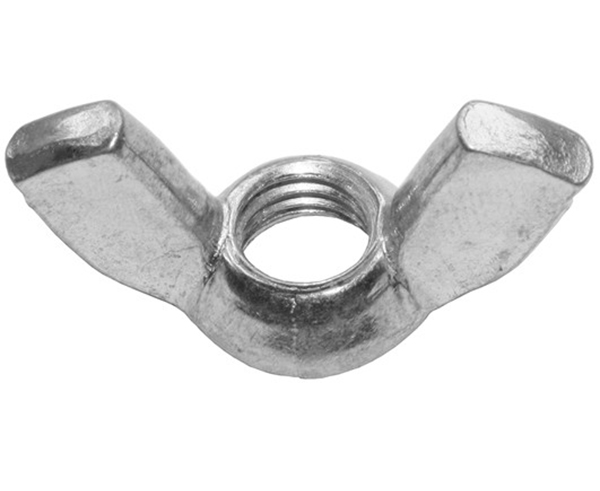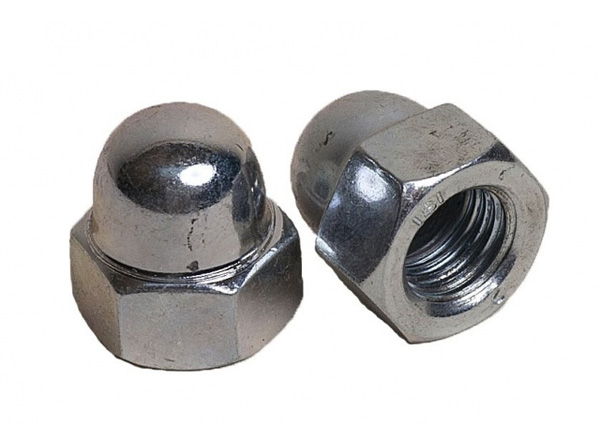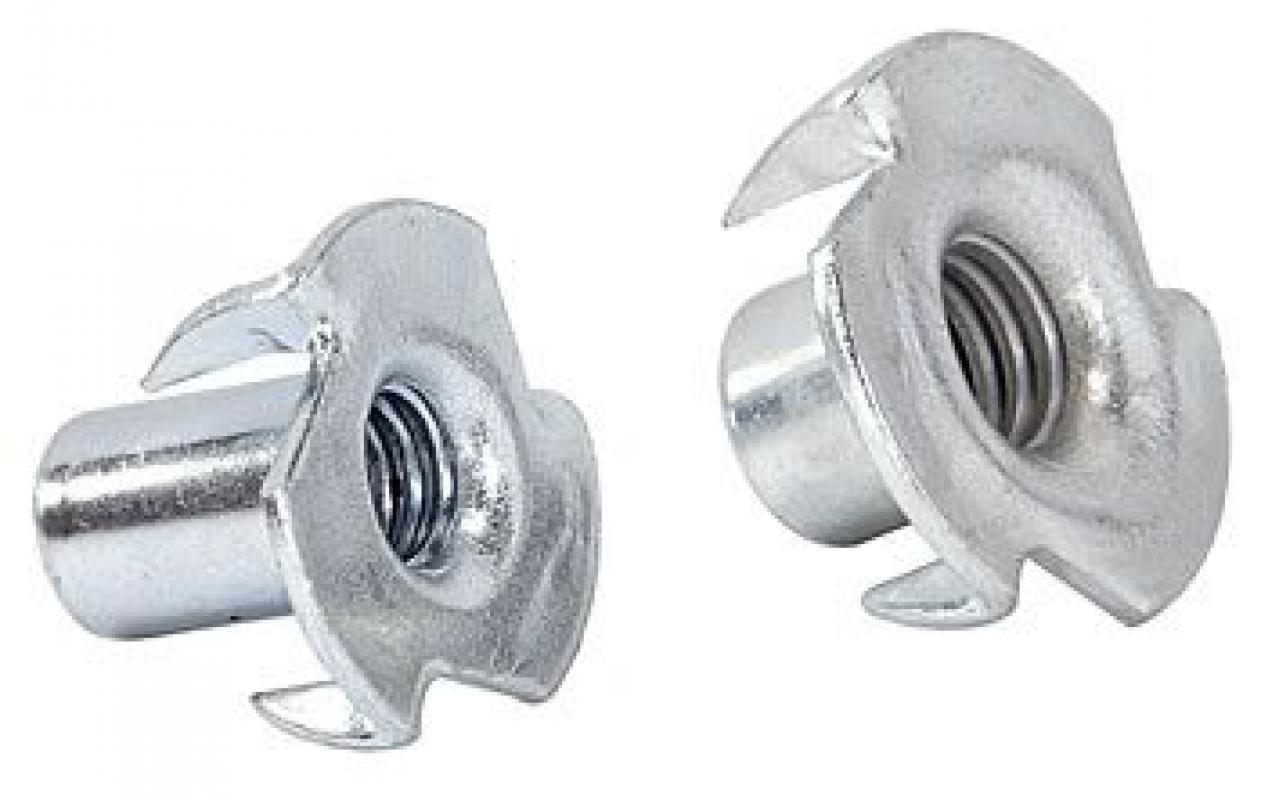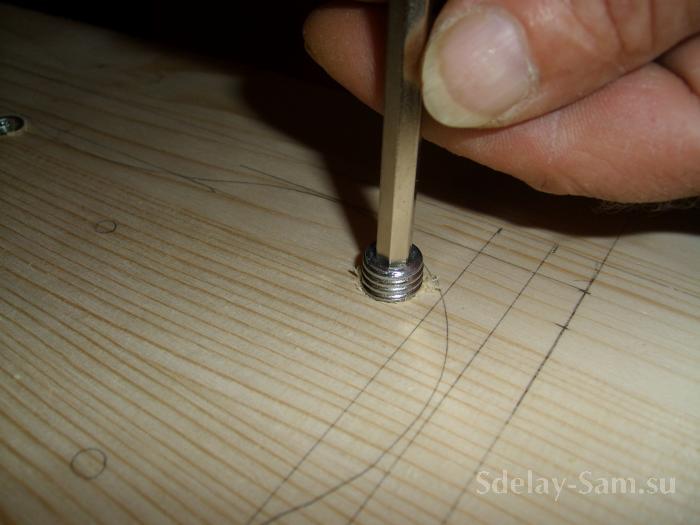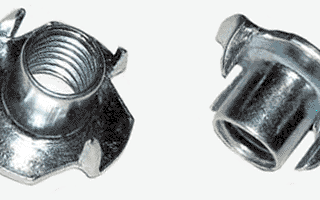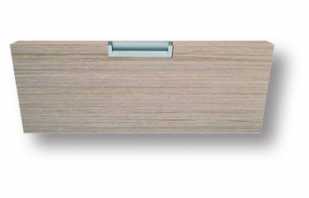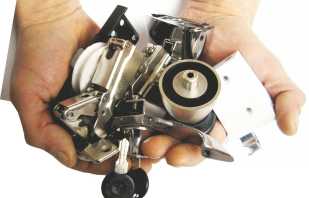Purpose of furniture nut, characteristics of fasteners
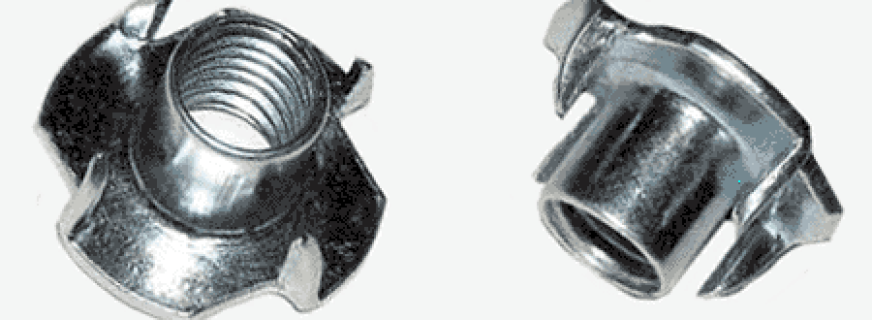
The strength and wear resistance of furniture during its operation largely depend on the quality of hardware products. One of the main parts for the screed, which provides a reliable connection of parts of the fastening structure, is a furniture nut, which is the simplest type of hardware, made in various modifications and varieties, depending on the type of furniture and its purpose.
Appointment
Furniture nut is a fastener with a threaded hole. Used in combination with other hardware. It is made of carbon, alloy and unalloyed stainless steel and non-ferrous alloys. It is used in those attachment points where it is necessary to make the connection strong, reliable, with the possibility of dismantling.
An element for detachable, one-piece, movable connection, is widely used in the assembly of cabinet, kitchen furniture, the manufacture of sofa frames, beds. Auxiliary part, well suited for threaded, eccentric, couplers, ensuring reliability and durability of fastening. The fastener, under different loads, with the correct hardware configuration during tightening, reduces the risk of thread breakage.
The main service purpose of the part is screwing onto a bolt, matching its diameter and thread, ensuring accurate relative positioning both in a static state and during operation, and prevents deformation of elements upon contact. The product by its design features is considered technological, has the correct diameter, small degree of surface roughness and tightness. To improve the corrosion resistance, the nut is coated with chrome or zinc.
The fastening hexagonal element of general importance can be coarse, normal and high precision, with a reduced size, high, low for tightening "turnkey" with little force. The element is convenient when tightening while turning the wrench tool a full revolution.
Varieties
The fastener with a through hole is widely used in the furniture industry and varies in shape from the outside and internal thread. The most common product among the entire assortment is the hexagonal middle class hardware. Its technological development allows the rotational action to be carried out uniformly, progressively, without much tension.
The multifaceted shape, metric or trapezoidal thread, different sizes make the nut unique, it is used in any place, even where the mass of the mechanism is strictly limited. There are several types of hex nuts that are often used when assembling furniture, these are:
- cap or spherical - the product is a standard hex nut with a blind threaded hole and a spherical end surface. It is applied in demountable connections. The presence of the cap allows you to hide protruding, bolts, pins, reducing injuries during operation, giving the design aesthetics;
- lamb nut - hardware has a smooth outer surface; it has a large and small pitch as an internal thread. A distinctive feature is the unusual shape, reminiscent of the ears of the “cheburashka”, with the help of which it is carried out by hand only. It is also effectively used to tighten fasteners in confined spaces, as a decoration;
- mortise insulated furniture nut - a part made of corrosion-resistant stainless steel, by design, represents a sleeve with an internal thread with a flat metal disk with an opening at the end. Four studs cut out on the flange head, bent towards the cylinder, firmly hold the nut in the material, prevent it from turning during tightening. It is used for one-sided installation when assembling wooden furniture. Hammer a nut into a previously prepared seat.
Secret furniture nuts occupy a special place among hardware products, having design features, they provide a reliable connection when assembling any furniture. The product is a small rod with an internal metric thread and a decorative semicircular or flat head. Parts are made of galvanized steel with high corrosion resistance.
For the assembly of sofas, tables, beds of cabinet furniture, the bolt nut is most suitable, since it differs from all types of hardware in a special aesthetic appearance. Due to its design, it is practically not noticeable on the front side. Often used in the assembly of luxury furniture.
The fastening element fitting tightly to the joined surface does not leave a gap, which greatly simplifies and speeds up the assembly process of cabinet and modular furniture without using special tools.
Attachment Rules
To achieve the correct assembly of furniture, it is necessary to know the features of the installation of threaded joints, which makes it possible to achieve the desired fit of the connecting elements, without distortion, curvature, self-unscrewing. The main thing is to adhere to a certain sequence in order to prevent the deformation of the thread and the breakage of the bolt. The correct wrench tool will help to avoid uneven force tension. The main requirements that you need to know:
- tightening the nut to the place of landing should be carried out freely by hand, without hesitation on the bolt or stud;
- the end face of the fastener should be perpendicular to the axis of the rod, not have roughness, nicks;
- when lengthening the bolt, the tightening must be controlled, the rotation of the key should be carried out along the angle of rotation of the nut.
Before starting screed structures, it is first necessary to complete all fastening hardware. Check their compatibility by material, by type of protective coating, by mechanical properties. Also, you need to take into account the type of installation, the availability of seats, the aesthetics of the connection. When performing work, comply with safety regulations.
After the control preparation, the surface of the fasteners is cleaned of grease, the condition of the thread is checked, damaged places are cleaned, and then an examination is made of the fit of the connecting surfaces. The work process begins with the nut landing on the tie piece and pre-tightened by 75% to check for gaps along the entire circumference. After verifying the correct location of the hardware, carry out the final tightening of the nut.
In practice, it is not always possible to make an accurate tightening of the threaded connection, professionals recommend using a short service key for small nuts, and a “key” for large nuts with a long handle from 10 to 15 cm.
The nuances of choice
Today, despite the wide variety of hardware for screeds, choosing the right fastener is not always easy. Details that are simple in appearance have their own design features and functional tasks. Each element of furniture fasteners, connecting the details of structures of varying complexity, differ not only in size, shape, quality of the material, but the diameter of the thread. Choosing the necessary fastener, you must also take into account operating conditions.
To simplify this task, often use the classification of fasteners, which determines their purpose, this:
- nut for wide use;
- a fastener for a screed made of polymer material;
- threaded fasteners of high strength;
- nut for high-life, tight connections;
- fastener for one-sided setting, unstressed riveting.
Choosing the necessary element according to the classification, it is necessary to take into account its size and design features, such as the length of the rod, the diameter of the hole, the type of slot, the shape of the head, the type of thread. All hardware indicators are indicated in the normative conformance tables DIN-GOST-ISO.
Of great importance in the selection of the part is the material and its heat treatment, which provide strength, reliability, durability to the joints, guarantee high resistance to tearing and temperature extremes. Particular attention should be paid to the main thread parameters, which include:
- outer and inner diameter (indicated by lowercase or uppercase letters);
- thread pitch is the distance between the sides of the profile, parallel to the axis of the thread;
- the number of thread starts - is determined by the end of the hardware, where the step begins;
- screw cutting stroke - the value of the axial movement of the nut in one revolution.
For the correct definition of the product, there is a classification that characterizes the part according to the shape of the profile, surface, location and operational purpose. In the furniture industry, nuts with a metric thread, with a low defect rate and good wear resistance, are mainly used. All fasteners are standardized, have a designation in the form of the letter M and numbers.
Check the quality of the fastener, you can use a conventional open-end wrench, picking up the size of the hardware, first tighten, and then unscrew. There are many types of tools for disassembling and assembling threaded connections: open-end wrenches on one side and combination wrenches, with interchangeable heads, end wrenches for parts with a hexagonal recess, ring one-way.
The most demanded today is a modern mechanized wrench with electric and pneumatic drive. The simple design has been widely used due to the reliability and safety in operation.
Video


